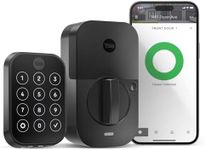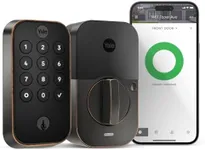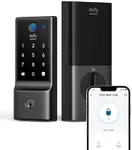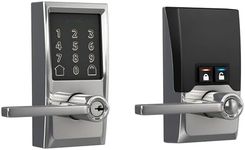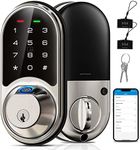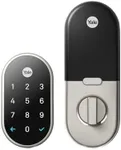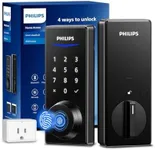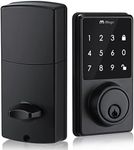Buying Guide for the Best Smart Lock Over Existing Deadbolt
Choosing a smart lock to go over your existing deadbolt can significantly enhance your home security and convenience. Smart locks offer features like remote access, keyless entry, and integration with other smart home devices. When selecting the right smart lock, it's important to consider various specifications to ensure it meets your needs and is compatible with your current setup. Here are some key specs to consider and how to navigate them.CompatibilityCompatibility refers to whether the smart lock can be installed over your existing deadbolt without requiring major modifications. This is important because it ensures that the installation process is straightforward and that the lock will work seamlessly with your current door hardware. To navigate this, check the manufacturer's specifications to see if your deadbolt model is listed as compatible. If you have a standard deadbolt, most smart locks should fit, but it's always best to double-check. If you have a non-standard or older deadbolt, you may need to look for a smart lock specifically designed for such cases.
ConnectivityConnectivity refers to how the smart lock communicates with your smartphone or other devices. This is important because it determines how you can control and monitor the lock remotely. Common connectivity options include Bluetooth, Wi-Fi, and Z-Wave. Bluetooth is suitable for local control within a short range, Wi-Fi allows for remote access from anywhere with an internet connection, and Z-Wave is ideal for integration with a smart home hub. Choose Bluetooth if you only need local control, Wi-Fi for full remote access, and Z-Wave if you have or plan to build a smart home ecosystem.
Power SourceThe power source of a smart lock is how it gets the energy to operate. This is important because it affects the lock's reliability and maintenance. Most smart locks are battery-powered, but some may offer additional power options like a backup key or USB charging. Battery life can vary, with some locks lasting several months on a single set of batteries. To navigate this, consider how often you are willing to change batteries and whether you want a backup power option. If you prefer low maintenance, look for a lock with long battery life and easy battery replacement.
Security FeaturesSecurity features refer to the additional protections a smart lock offers beyond basic locking and unlocking. This is important because it enhances the overall security of your home. Features to look for include encryption, tamper alerts, auto-locking, and two-factor authentication. Encryption ensures that your data is secure, tamper alerts notify you of any unauthorized attempts to access the lock, auto-locking automatically secures the door after a set period, and two-factor authentication adds an extra layer of security. Choose a lock with robust security features if you prioritize safety and want to protect against potential threats.
Integration with Smart Home SystemsIntegration with smart home systems refers to the ability of the smart lock to work with other smart devices and platforms. This is important because it allows you to create a cohesive and automated home environment. Common integrations include compatibility with voice assistants like Amazon Alexa, Google Assistant, and Apple HomeKit, as well as other smart home devices like cameras and alarms. To navigate this, consider which smart home systems you already use or plan to use. Choose a lock that is compatible with your preferred ecosystem to ensure seamless integration and control.
User Access ManagementUser access management refers to the ability to control and monitor who can access your home. This is important because it allows you to grant and revoke access easily, track entry times, and ensure that only authorized individuals can enter. Features to look for include the ability to create temporary or permanent access codes, remote access control, and activity logs. To navigate this, consider how many people need access and how you want to manage it. Choose a lock with flexible user access management if you have multiple users or need to provide temporary access to guests or service providers.

